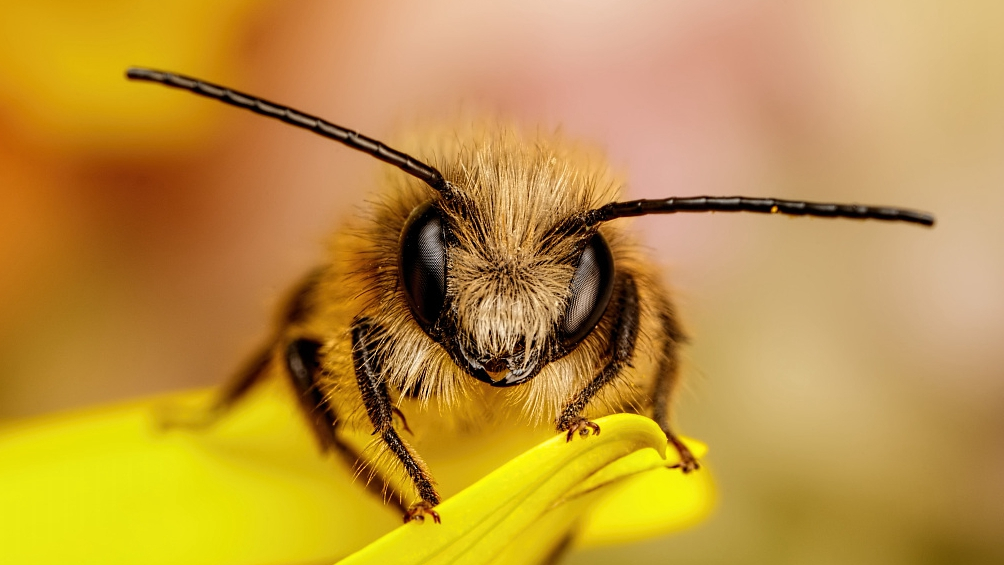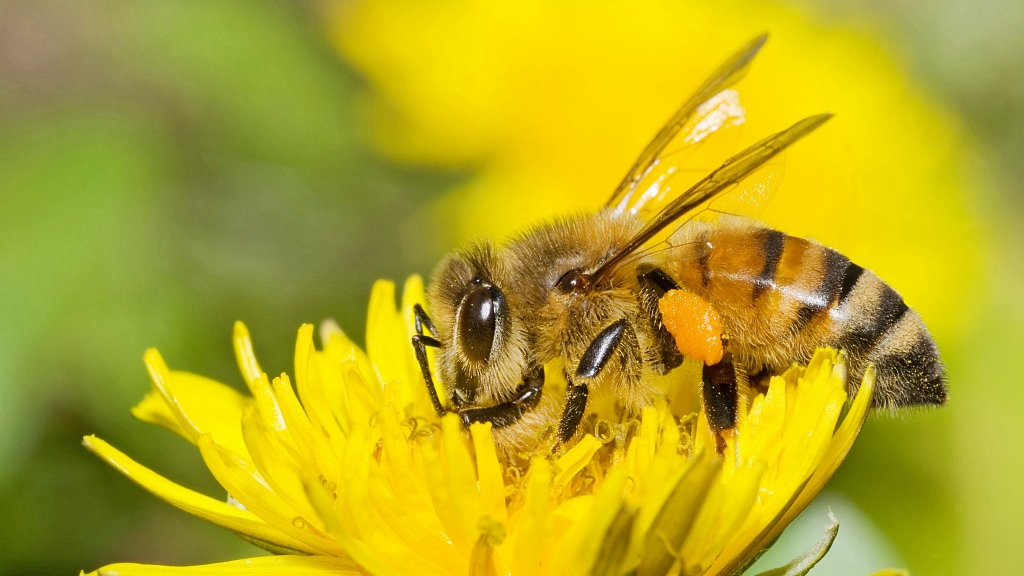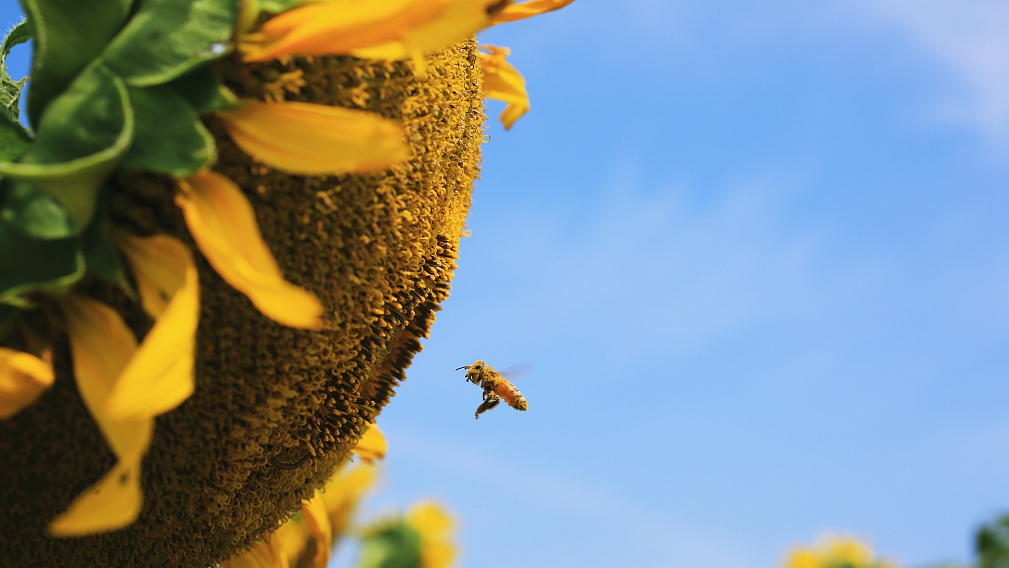
Animal
14:58, 07-Feb-2019
Insects' way home: The secret of bee's navigation
Updated
16:50, 07-Feb-2019
By Xing Fangyu

Bee probably has the strongest relationship with humans compared to other insects. For hundreds of years, human developed ways to raise them and harvest their sweet honey. Now, humans have invented navigation systems through the inspiration of the bees. So what's the secret of bee's navigation?
Magnetism

(Bee and dandelion flower. /VCG Photo)
(Bee and dandelion flower. /VCG Photo)
Sensing magnetic fields is one of the most common ways for animals to navigate. Insects like bees and some other animals like rodents, birds, fishes, reptiles, bacteria and insects rely on magnetism to navigate.
The magnetic structure for bees is in their abdomens. A Canada team consists of physicists and biologists found it through a series of experiments. It showed that a strong permanent magnet would cause a disruptive effect for bees' navigation. And the researchers also dissected bees' body to test each pellet's reaction with a superconducting quantum interference device (SQUID). It turns out only the part from the abdomen has a clear hysteresis loop.

(Bee flying on a sunflower. /VCG Photo)
(Bee flying on a sunflower. /VCG Photo)
Optics
Another common fact for an animal to determine the speed and distance is optical flow. Bees' brains are very fascinating. Bee brain is about 20,000 times smaller than the human brain. It has a very sophisticated sensory system to let them form excellent sight and calculate distances.
But scientists still don't know the exact mechanism in the brain of bees when they are finding the way home or to food. Researchers found that the central complex in the brain plays a vital role in controlling the navigation. But how does it actually happen in the neurons of the brain is still unclear.
(Top image from VCG.)

SITEMAP
Copyright © 2018 CGTN. Beijing ICP prepared NO.16065310-3
Copyright © 2018 CGTN. Beijing ICP prepared NO.16065310-3